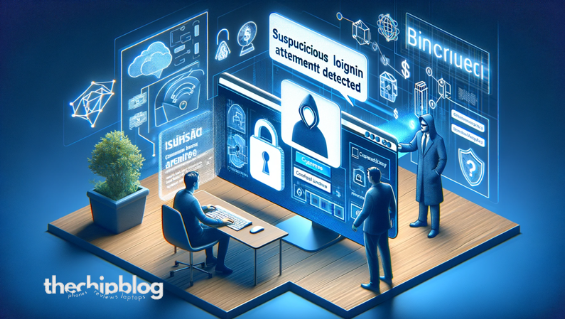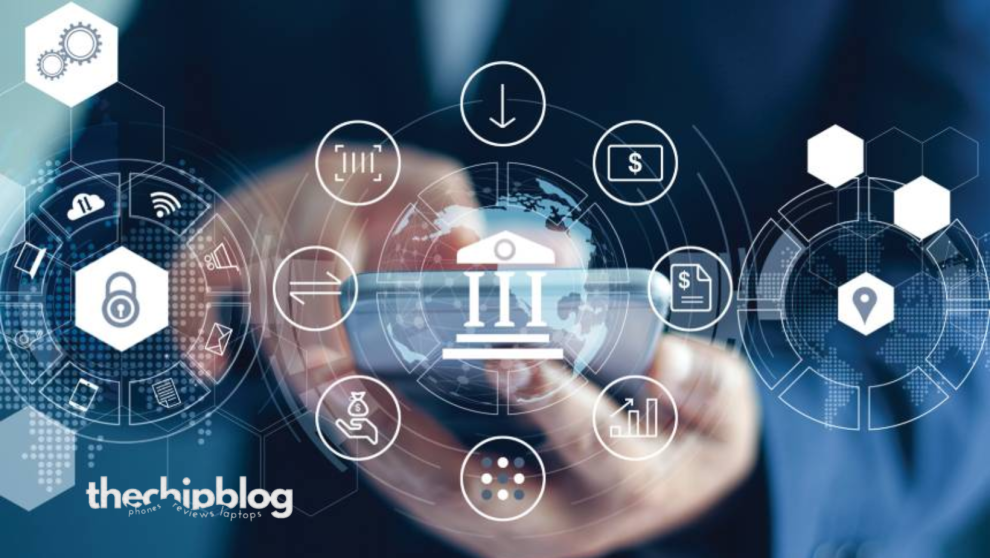In a shocking turn of events that has sent shockwaves through the financial sector and beyond, a major U.S. bank has been brought to its knees by a sophisticated cyber attack, exposing glaring vulnerabilities in the industry’s digital defenses. The far-reaching implications of this security breach have left customers reeling, regulators scrambling, and cybersecurity experts sounding the alarm about the grave risks facing our financial institutions.
As the details of this unprecedented attack unfold, one thing becomes abundantly clear: the cyber attack cripples major U.S. bank, exposing financial vulnerabilities that can no longer be ignored. In this comprehensive report, we delve deep into the heart of the crisis, dissecting the events that transpired, analyzing the potential consequences, and exploring the urgent need for robust cybersecurity measures to safeguard our financial systems.
What Exactly Happened?
The cyber attack that crippled the major U.S. bank unfolded with alarming swiftness and precision. According to initial reports, the bank’s digital infrastructure was infiltrated by a highly sophisticated malware strain, believed to be the work of a state-sponsored hacking group. This malicious code quickly spread through the bank’s systems, compromising sensitive data, disrupting critical operations, and effectively paralyzing the institution’s ability to function.
As the attack progressed, customers were met with service disruptions, frozen accounts, and a complete lack of access to their funds. ATMs went offline, online banking platforms became inaccessible, and branches descended into chaos as overwhelmed employees struggled to assist panicked customers.
The cyber attack cripples major U.S. bank, exposing financial vulnerabilities that extend far beyond the targeted institution. The ripple effects of this breach have reverberated throughout the entire financial ecosystem, raising concerns about the interconnectedness of our banking systems and the potential for cascading failures.

Why Is This Cyber Attack So Significant?
While cyber attacks on financial institutions are not uncommon, the sheer scale and severity of this particular breach have set it apart from previous incidents. The implications of this attack are far-reaching and multi-faceted, with consequences that could shape the future of cybersecurity practices in the banking industry and beyond.
Firstly, the successful infiltration of a major U.S. bank by sophisticated hackers underscores the urgent need for enhanced security measures. It exposes vulnerabilities that have long been suspected but rarely demonstrated with such devastating effect. This attack serves as a stark reminder that even the most well-resourced institutions are not immune to cyber threats, and complacency in the face of evolving digital risks can have catastrophic consequences.
Secondly, the cyber attack cripples major U.S. bank, exposing financial vulnerabilities that extend beyond the individual institution. The interconnected nature of the banking system means that a breach of this magnitude could potentially trigger a domino effect, compromising the integrity of the entire financial ecosystem. Trust in the system’s security is paramount, and this attack has undoubtedly eroded consumer confidence in the safety of their financial assets.
Furthermore, the potential fallout from this cyber attack could have far-reaching economic implications. With financial transactions grinding to a halt and consumer confidence shaken, the ripple effects could extend to businesses, investments, and even global markets. The economic impact of such a breach is difficult to quantify but could prove staggering, underscoring the need for robust cybersecurity measures to maintain the stability and integrity of our financial systems.
How Did the Cyber Attack Unfold?
As the investigation into the cyber attack continues, security experts and law enforcement agencies are working tirelessly to piece together the intricate details of how this devastating breach unfolded. While the full scope of the attack remains shrouded in secrecy, some key details have emerged, offering a glimpse into the sophistication and audacity of the perpetrators.
According to preliminary reports, the cyber attack cripples major U.S. bank, exposing financial vulnerabilities through a multi-pronged approach. The initial breach is believed to have occurred through a well-crafted phishing campaign, where unsuspecting employees were duped into providing login credentials or inadvertently downloading malicious code. Once inside the bank’s systems, the hackers deployed a range of advanced techniques to evade detection and expand their foothold.
Experts suspect the use of advanced persistent threats (APTs), highly targeted and stealthy malware designed to infiltrate and persist within a network for extended periods. These APTs likely enabled the hackers to move laterally across the bank’s systems, compromising critical infrastructure and gaining access to sensitive data repositories.
As the attack progressed, the hackers are believed to have employed a range of tactics, including data exfiltration, encryption, and system disruption. In some cases, sensitive customer information and financial records were reportedly stolen and held for ransom, while in other instances, key systems were rendered inoperable through targeted denial-of-service attacks or destructive malware payloads.
The sheer sophistication of this cyber attack underscores the formidable capabilities of the adversaries involved. Cybersecurity experts have speculated that the attack bears the hallmarks of a state-sponsored hacking group, given the resources and expertise required to orchestrate such a coordinated and devastating breach.
Navigating the Aftermath: Critical Questions and Concerns
In the wake of this unprecedented cyber attack, a barrage of critical questions and concerns have emerged, prompting urgent discussions within the banking industry, regulatory bodies, and the cybersecurity community. As the dust settles and the full extent of the damage is assessed, these pressing issues must be addressed to mitigate future risks and fortify our financial institutions against similar threats.
What are the implications for customer data and privacy?
One of the most pressing concerns arising from this cyber attack is the potential compromise of sensitive customer data. With reports of data exfiltration and ransom demands, the specter of identity theft, financial fraud, and widespread privacy violations looms large. Customers whose personal and financial information may have been exposed are understandably anxious, and the affected bank must take swift and decisive action to address these concerns.
How will consumer trust be restored?
The cyber attack cripples major U.S. bank, exposing financial vulnerabilities that extend far beyond the targeted institution. Consumer trust in the banking system is paramount, and this breach has undoubtedly shaken that trust to its core. Rebuilding confidence in the security and reliability of financial institutions will be a monumental task, requiring transparency, accountability, and a demonstrated commitment to implementing robust cybersecurity measures.
What regulatory changes can be expected?
In the wake of this catastrophic breach, regulators and policymakers are likely to scrutinize the cybersecurity practices and protocols of financial institutions with renewed vigor. Expect tighter regulations, more stringent compliance requirements, and heightened oversight to ensure that banks and other financial entities are taking adequate measures to protect against cyber threats.
How will the industry respond to evolving cyber threats?
The cyber attack cripples major U.S. bank, exposing financial vulnerabilities that necessitate a paradigm shift in the industry’s approach to cybersecurity. Complacency and reactive measures are no longer viable options in the face of ever-evolving cyber threats. Proactive strategies, continuous risk assessment, and the implementation of cutting-edge security technologies will be essential to stay ahead of the curve.
Will there be a push for greater collaboration and information sharing?
Faced with a common adversary in the form of sophisticated cyber threats, the financial sector may recognize the need for greater collaboration and information sharing. By pooling resources, sharing threat intelligence, and fostering a culture of cooperation, the industry can collectively bolster its defenses and better prepare for future attacks.
Fortifying the Future: Cybersecurity Strategies for the Financial Sector
As the dust settles from this devastating cyber attack, the financial sector must confront the harsh realities exposed by this breach and take decisive action to fortify its digital defenses. Cybersecurity can no longer be an afterthought or a secondary concern; it must be woven into the very fabric of financial institutions, with robust strategies and cutting-edge technologies implemented to safeguard against evolving threats.
One crucial strategy that must be embraced is the adoption of a comprehensive risk management approach. Financial institutions must conduct thorough risk assessments, identifying vulnerabilities and potential attack vectors, and implementing proactive measures to mitigate these risks. This includes regular security audits, penetration testing, and the implementation of robust access controls and encryption protocols.
Moreover, investing in advanced cybersecurity technologies and solutions will be paramount. This may include deploying next-generation firewalls, implementing advanced threat detection and response systems, and leveraging artificial intelligence and machine learning to identify and respond to emerging cyber threats in real-time.















Add Comment